A devastating cycle of fire, record rain and huge landslides batters California’s Central Coast
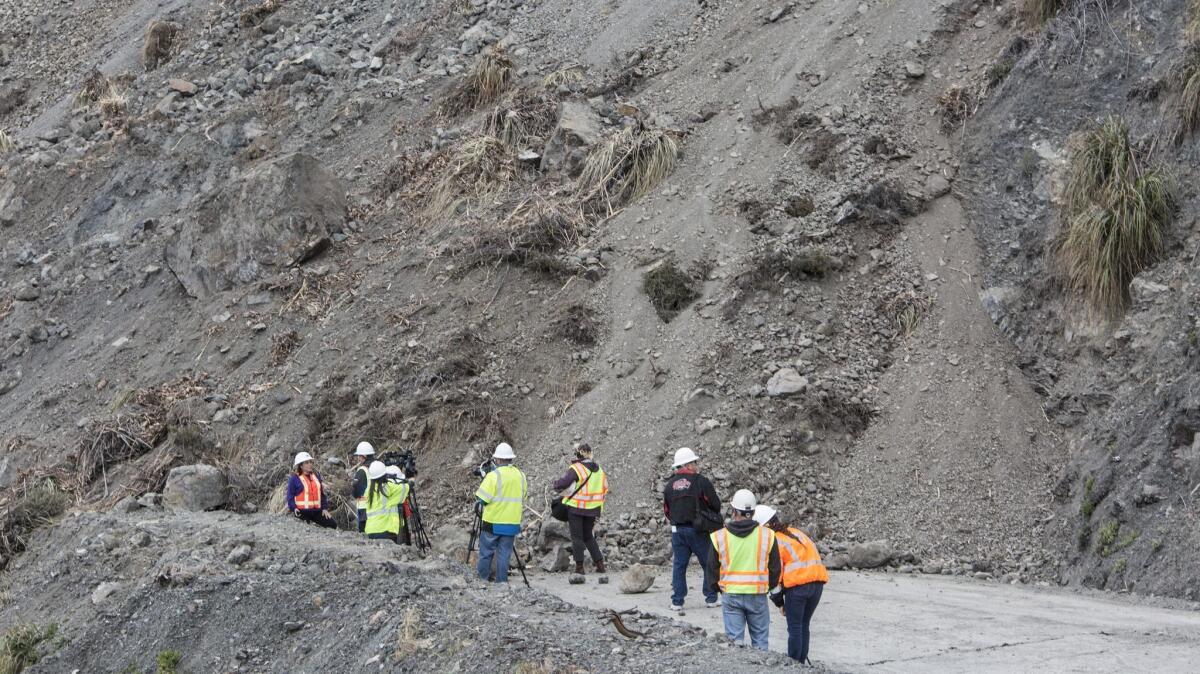
- Share via
It has been a painful 10 months for California’s Central Coast.
It started with a scorching summer that dried out hillsides and invited a devastating wildfire. That was followed by deadly winter rains that knocked out critical roads and bridges, and it worsened this weekend when a massive landslide collapsed the side of a mountain on top of Highway 1, burying it likely for months.
“We’ve had a cascade of events that have gone from bad to worse,” said Stan Russell, executive director of the Big Sur Chamber of Commerce. “Let’s hope this is it.”
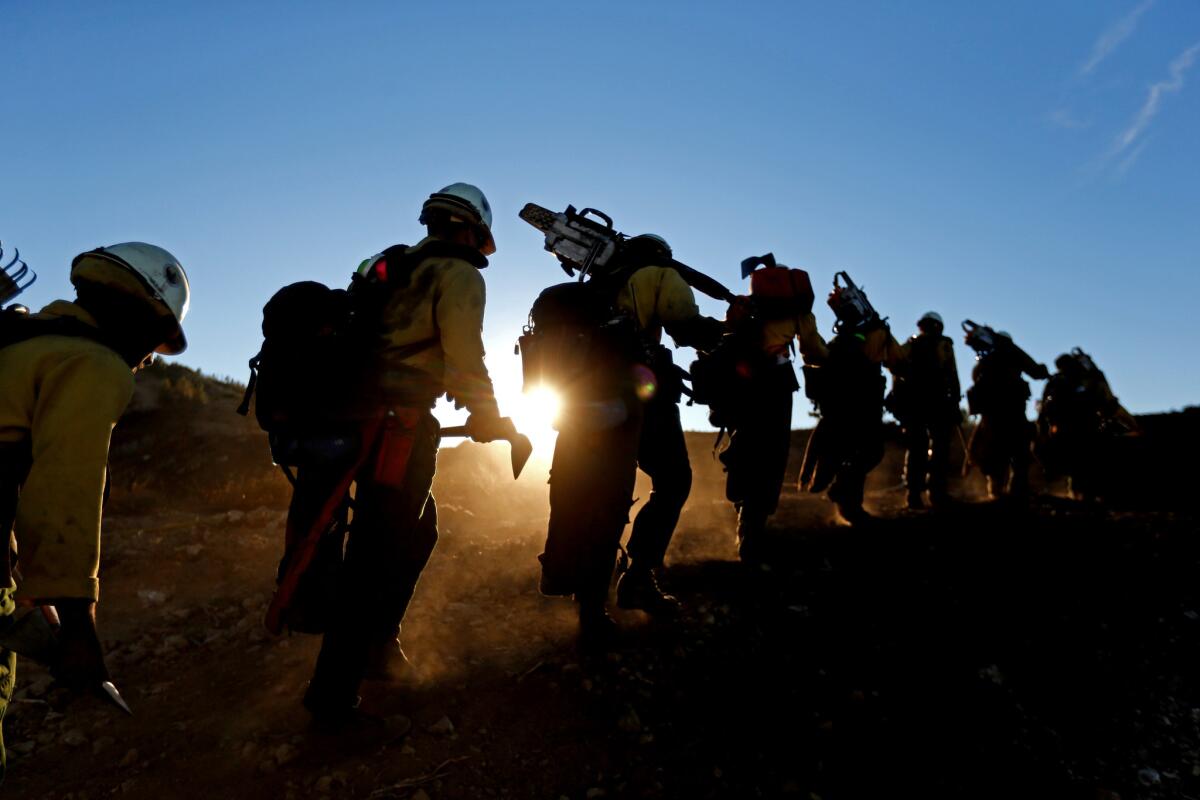
WALLS OF FLAME
One of the most expensive fires in U.S. history
In July 2016, an illegal campfire sparked the Soberanes fire north of Big Sur. The stubborn, drought-fueled blaze took 83 days to contain and cost at least $229 million to fight.
The fire destroyed more than 50 homes along Palo Colorado Canyon, near Pacific Coast Highway, as well as in the Carmel Highlands before it spread into steep, rugged hillsides in Los Padres National Forest and Garrapata State Park. Robert Reagan III was killed when the bulldozer he was operating rolled down a steep slope.
The blaze was defined by its refusal to go out in some of the most difficult terrain firefighters can face. When it started, firefighters had to hike nearly two miles just to access the flames. As the blaze surged in size, growing between 5,000 and 6,000 acres each day during the first week, firefighters struggled to get in close enough to stop its advance.
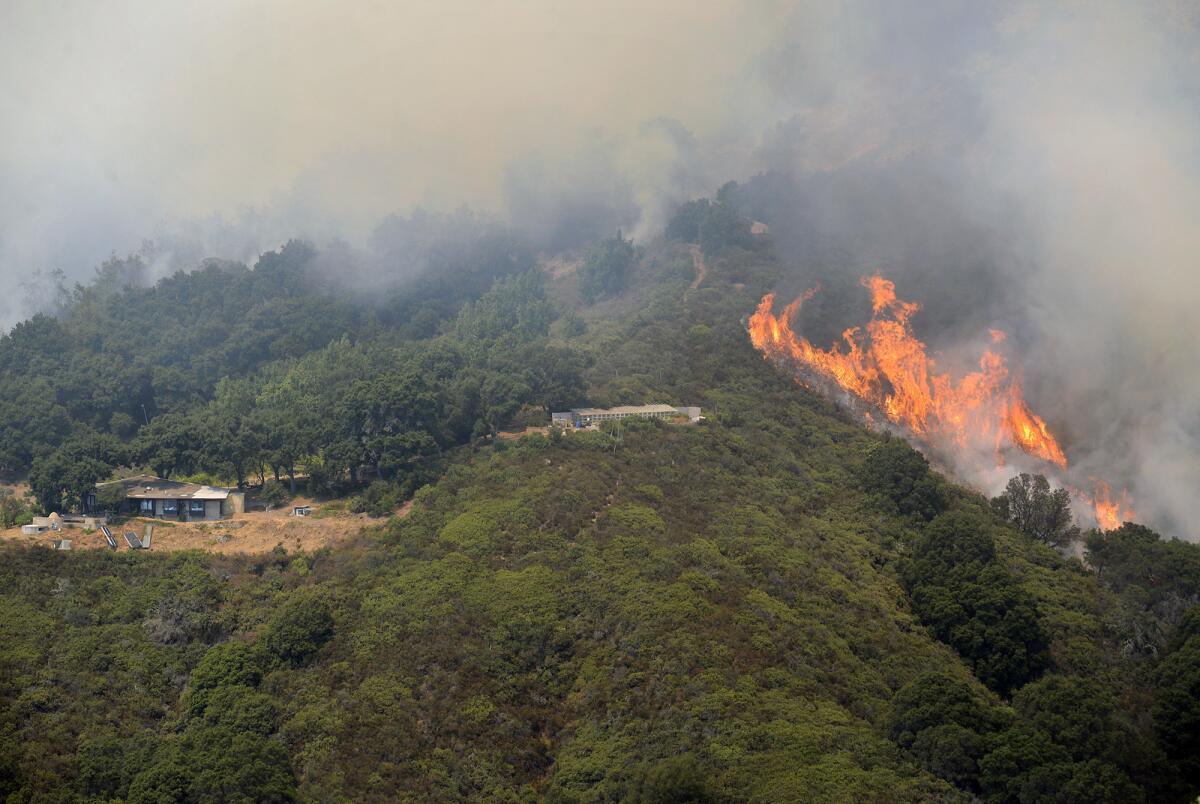
Crews worked to trap the fire in deep terrain by burning excess fuel around its edges and then attacked it by air. Amid the battle, mountain roads that locals depended on to get in and out of Big Sur to the north were closed.
The blaze was officially contained in October. It charred 132,127 acres — an area about four times as large as San Francisco.
Some officials have described it as the most expensive the U.S. Forest Service has ever fought, but the National Interagency Fire Center said the preliminary figures do not account for inflation.
CUT OFF FROM THE WORLD
As bridge fails, communities become islands
Then the Pfeiffer Canyon Bridge failed in February, severing for the rest of the year a vital Pacific Coast Highway link that Monterey County businesses rely on.
For the secluded community in Big Sur, where only a handful of highways cut through the mountains or meander north and south along the coast, a long-term closure is like amputating a limb.
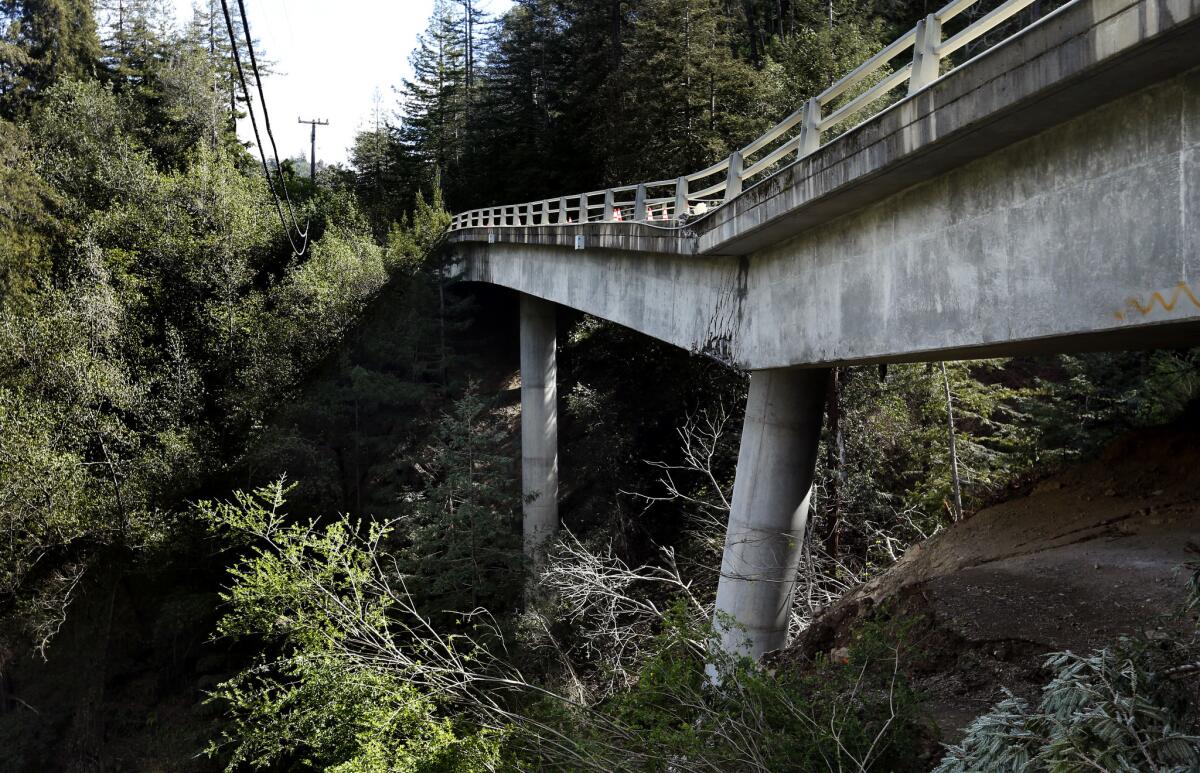
“There’s an economic impact whenever Highway 1 closes down,” said Jim Shivers, a spokesman for Caltrans District 5, which comprises Santa Barbara, San Luis Obispo, Monterey, San Benito and Santa Cruz counties. “We’re getting phone calls every day from people all over the country and Europe who are planning their trips.”
The isolation was magnified when the Pfeiffer Canyon Bridge’s failure closed Highway 1 to the north and landslides near Ragged Point blocked it to the south. Also, a portion of hill supporting Nacimiento-Fergusson Road collapsed, blocking the only east-west pass through the Santa Lucia Mountains around Big Sur.
Nacimiento-Fergusson Road passes through Los Padres National Forest, the first area in Central California to receive rainfall when soggy atmospheric-river storms make landfall from the Pacific. The road was severely impacted by the storms, said park spokesman Andrew Madsen.
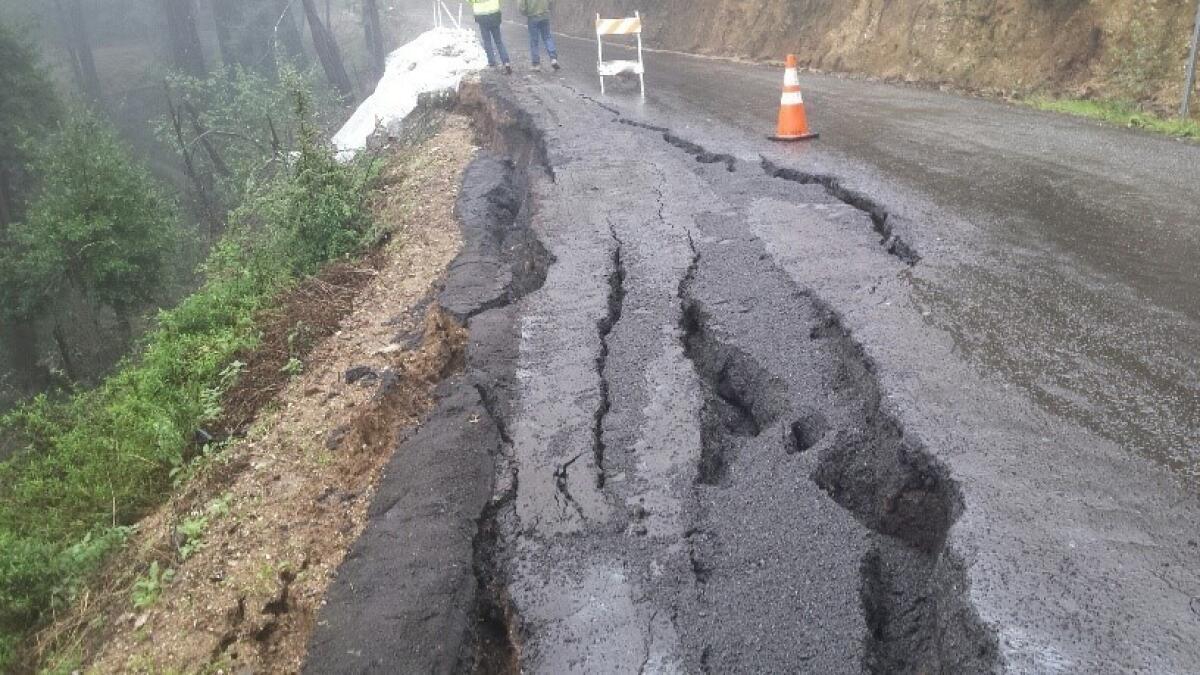
The road’s asphalt edge began to fold over onto the dirt- and brush-covered hillside, creating fissures more than a foot deep. For more than two weeks, travel along the roadway was restricted to one-hour windows in the morning, afternoon and night.
“It’s not the most lovely stretch of road; it’s very twisty and not really two lanes so you go pretty slow along that,” Madsen said. “For people that want to get out, that’s a lifesaver.”
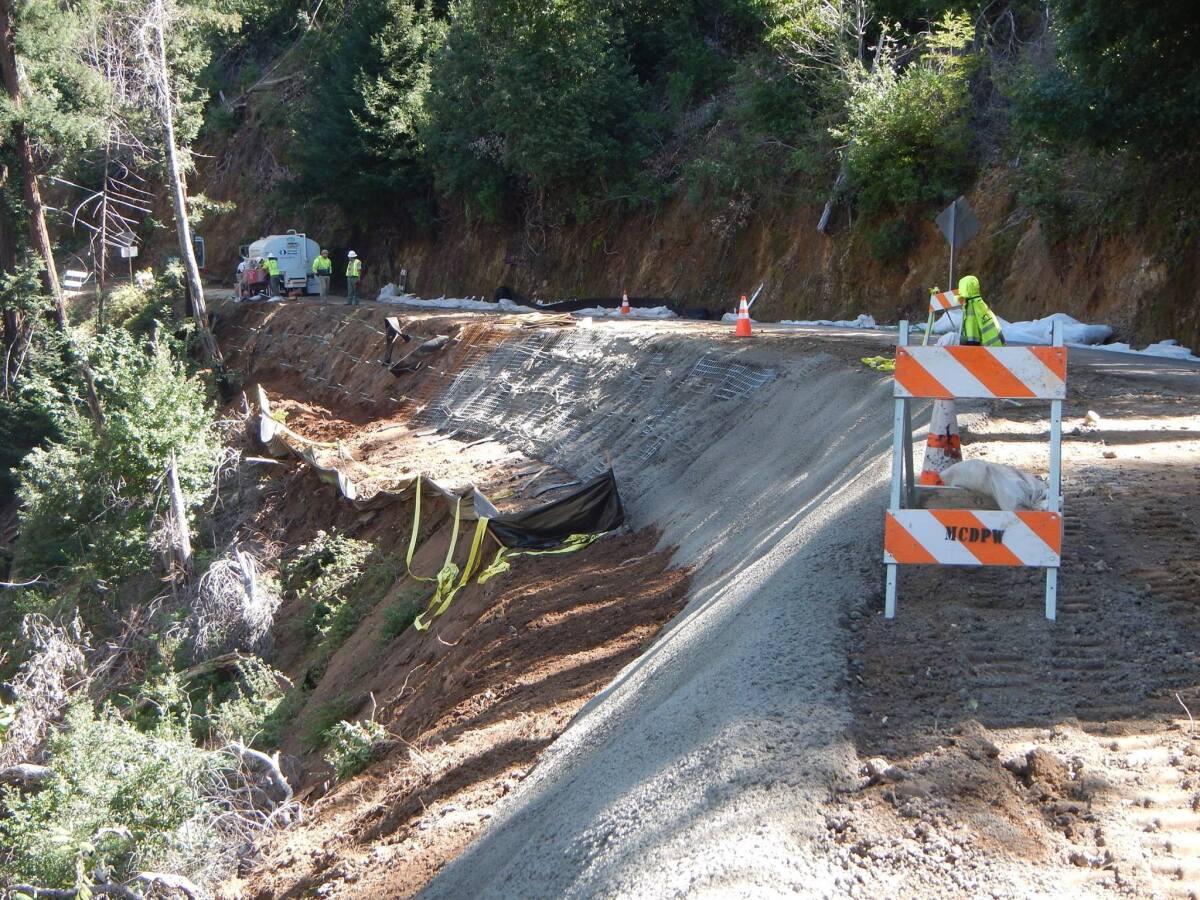
Since the landslides began in February, resorts and hotels have seen reservations canceled, some in just the last two days as word of Saturday’s landslide spread, said Russell, the Big Sur Chamber of Commerce executive. Some businesses have laid workers off, while others have closed altogether.
The Post Ranch Inn has taken to flying guests in by helicopter. What was once a 40-minute drive to Carmel-by-the-Sea for Big Sur residents has become a four-hour test of sanity for commuters who have to backtrack around mountains and up major highways clogged with other traffic.
LANDSLIDES REMAKE THE COASTLINE
Millions of tons of rock and dirt come crashing down
Then came Saturday, when millions of tons of rock, dirt and debris that engineers feared would slide downhill finally did — and literally re-formed a part of the state’s coastline. The collapse also dashed hopes that the 40-mile stretch of Highway 1 between Ragged Point and Pfeiffer Canyon Bridge would reopen soon.
“When we saw the aerial photo [of] this landslide … everyone had to go back on their heels and say, ‘OK, that’s going to delay the opening quite a bit here,’” Russell said.
We’ve had a cascade of events that have gone from bad to worse. Let’s hope this this is it.
— Stan Russell, executive director of Big Sur Chamber of Commerce
Officials are still assessing the damage and are not sure when Highway 1 will reopen.
“Several months would be safe to say,” Shivers said. “I was talking to the engineer on Saturday. He was basically astounded by what had transpired out there.”

The 40-mile stretch of Highway 1 was shut down months ago by various mudslides along its winding path up the coast. Saturday’s massive event was anticipated to a degree, Shivers said. More than a week ago, crews cleaning up debris from four previous slides were told to leave when engineers noticed the hillside was still moving.
“We were fearful because there was potential for additional slides. We didn’t think it would be the magnitude of this,” Shivers said.
Caltrans is evaluating the slide to determine how much it will cost to clean up debris, repair the road and reinforce the hillside. In the meantime, residents who can’t leave to the north because of the Pfeiffer Canyon Bridge face an even longer wait before a coastal path to the south is reopened.
“We have to stay upbeat,” Russell said. “You can’t sugarcoat a catastrophe. But Big Sur is a resilient community, and it always has been.”
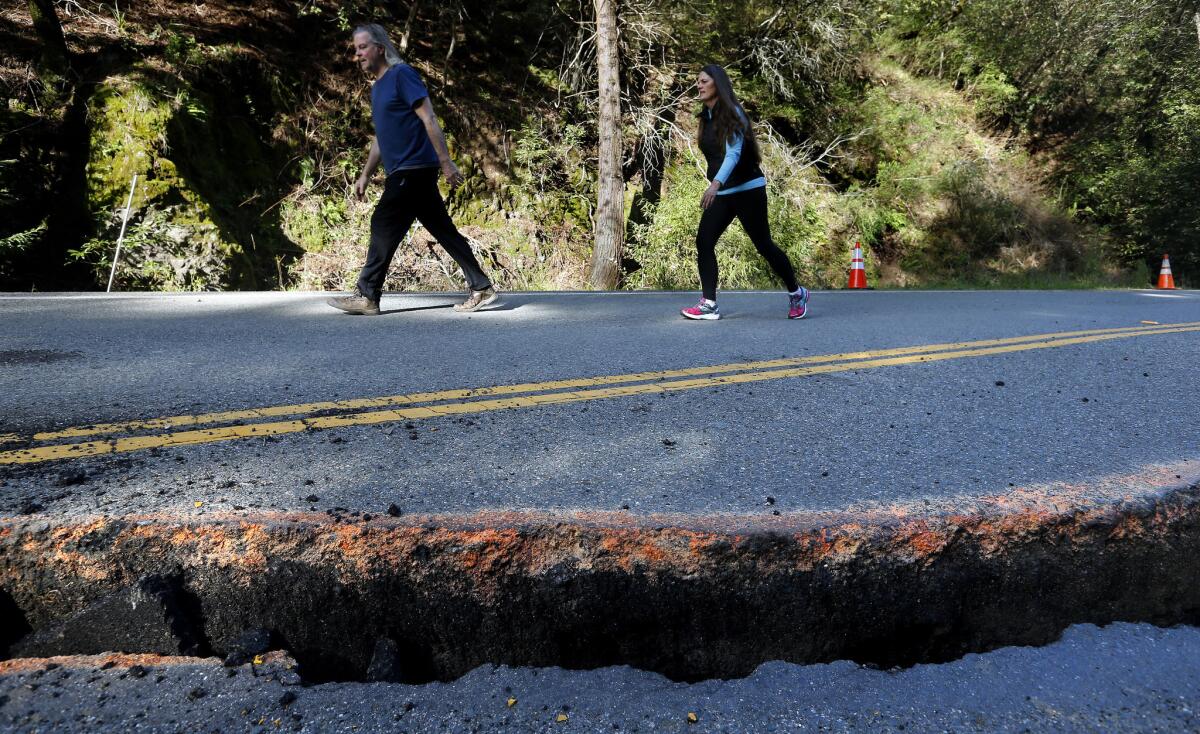
MOUNTING COSTS FROM A BRUISING WINTER
Floods, rain and snow test California’s infrastructure
Intense winter storms caused disruptions throughout the state. They buried mountain passes beneath feet of snow, flooded low-lying communities and caused enormous damage to the Oroville Dam’s spillways. Amid the destructive winter, some argue that the state’s greatest infrastructure damage occurred along the coast.
Caltrans estimates that it will need $1 billion to repair storm damage statewide. Of that sum, $680 million is needed by the three Caltrans coastal districts that stretch from the Oregon border to Santa Barbara.
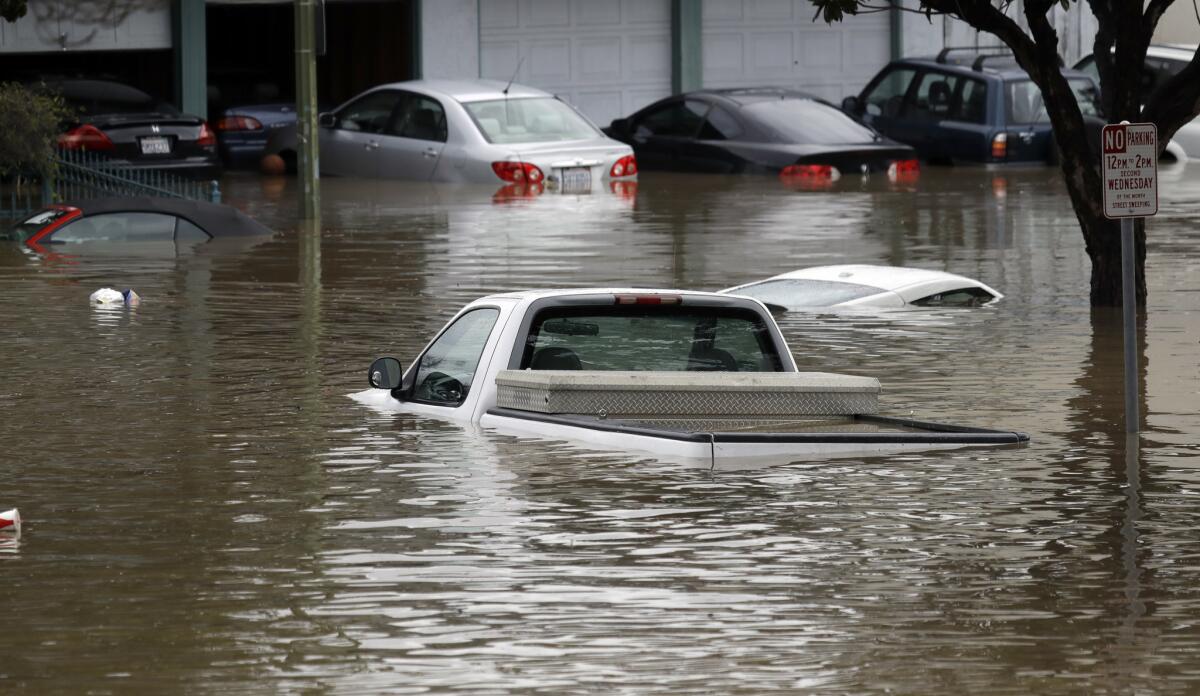
In the Bay Area, Interstate 580 was already marred with potholes, but it suffered even more damage due to heavy use from big rigs and incessant storms. One pass over a section of road by a fully loaded big rig equates to 10,000 passes by a standard SUV, said David Jones, associate director of the University of California Pavement Research Center.
“In a normal season we might have gotten by with another year or two, but because we had heavy rainfall and the water gets in and trucks go over it, something has got to give,” Jones said. “Really, it is like death by a thousand cuts.”
Popular mountain roads were just as vulnerable. A 400-foot section of Highway 35 in Santa Cruz County crumbled in February and has yet to be replaced.
A preliminary assessment of winter storm damage released by Caltrans on May 19 places repair costs for that section of Highway 35 at $37.4 million.
Statewide repairs to Highway 1, meanwhile, are estimated to be about $270 million. The estimate does not include damage from Saturday’s landslide, however.
For breaking California news, follow @JosephSerna on Twitter.
UPDATES:
4:25 p.m.: This article was updated with estimated repair costs for roads and highways statewide.
This article was first published at 9:30 a.m.
Sign up for Essential California
The most important California stories and recommendations in your inbox every morning.
You may occasionally receive promotional content from the Los Angeles Times.








